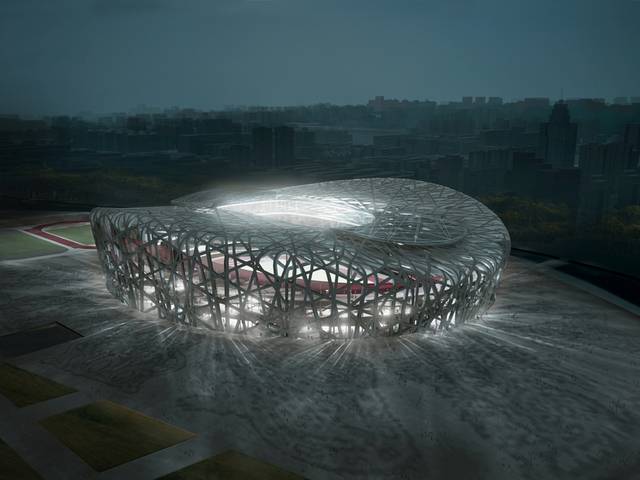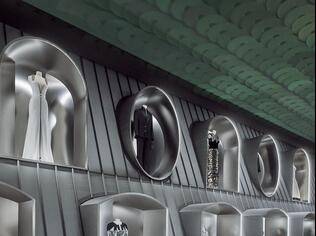On 18 July 2001, celebrations of fireworks and baijiu erupted throughout China as Beijing was declared to have won the bid to host the 2008 29th Olympic Games. To compete with other serious contenders like Paris and Toronto, Beijing needed to construct a bid that not only fulfilled but surpassed all the requirements stated by the International Olympic Committee. Focusing on the newly-created “third leg"? of the Olympic movement ~ the environment, the Beijing bid committee created a comprehensive environmental plan encompassing venue construction, transportation, waste management, and pollution control. However, their efforts to ensure that the Summer Games this year are truly green were complicated by the city's persistent, preexisting environmental problems. On air quality alone, Beijing's sulphur dioxide concentration degradation was considerably higher than the national average of 60 mcg/m3, due to its dependence on coal for heating. The city's total suspended particle concentration was a whopping 80 percent greater than the national average of 200 mcg/m3, resulting in the infamous gray shroud blanketing the city. The Beijing committee nevertheless repeatedly emphasized their commitment to resolve their problems, and significant strides have already been made to 'green' the 2008 Olympic Games.
YOU AND ME - BEIJING OLYMPICS ANTHEM
Air Pollution
The city's geographical problem intensifies the perpetual smog which often obscures the tops of its skyscrapers. Beijing is surrounded by mountain ranges that block air circulation and prevent air pollutant dispersion. With more than 1000 new cars registered daily and with coal remaining as a main energy fuel, levels of small but hazardous particles in the atmosphere often vastly exceed World Health Organization Air Quality guidelines. Beijing and Chinese authorities have so far refitted and relocated major polluting industries and encouraged the switch from coal to natural gas as a fuel source. Older buses, cars and taxis have been scrapped in favor of those powered by compressed natural gas, or new vehicles and fuels that reach the internationally recognized Euro III standard. As a result, concentrations of several key air pollutants including sulphur dioxide and carbon monoxide have fallen. In 2006, Beijing registered 240 "blue sky" days, or days with fairly good air quality. This was a rise of 64 days from the previous year. In September, "blue sky" days totaled 25, setting a record high in seven years, the latest figures from local environment authorities revealed.
Public Transport
Beijing has recently installed 16 kilometres of Bus Rapid Transport (BRT) lines, gifting the system a total passenger capacity of 100,000 people daily. Two more BRT lines are under construction. Four surface and underground rail lines have been completed with four more, including the Olympic Line, undergoing construction. The eight lines will have a capacity of nearly four million people daily. Overall, Beijing's public ground transportation capacity can hold 19 million passengers a day, yet it is under-utilised to the tune of roughly 8.5 million passengers per day. The United Nations Environment Programme (UNEP) has urged local authorities to adopt incentives and measures to bridge the gap and improve air quality. Citizens in possession of vehicles including motorcycles, passenger cars, sedans and trucks have been taxed more as of October 2007, with the rates ranging from 200 yuan to 600 yuan per annum, almost doubling the sums before the change. Also, the organizers have come up with a strategy offering free rides on public transport to spectators holding Olympic event tickets - the free public transport service will be available before the games commence and until the closure of the Paralympic Village, amounting to a total of just over 50 days. 3,060 petrol-powered cars, minivans and small buses will be deployed which the organizers say will meet modern emission control standards. Of the fleet of almost 2,300 coaches and buses being deployed during the Games, the organizers say 400 will be natural gas-powered with the rest using diesel. All of them will have less than 10,000 kilometres on the clock or will be newly registered.
Energy
The Beijing Polytechnic University was selected to design standards for energy conservation at the Summer Games. Energy consumption per square unit will be regulated carefully for cooling, heating and illumination in athlete housing, sports venues and commercial public facilities. Recommendations were also made to insulate floors, doors, ceilings and windows, the lack of which were oft-ignored drains on energy in China. The windows of the Workers' Stadium have been replaced with new double-layer, insulated windows which are more environmentally friendly than their old counterparts. The University study group also proposed clean energy sources like geothermal heating in the Olympic Village, natural gas for electricity and solar energy for hot water and illumination. Most of the Olympic venues and related facilities meet or exceed energy conservation requirements and have created a new standard for energy conservation in public buildings and residential constructions.
Solar power is being utilised to light lawns, courtyards and streets at several venues including the Olympic Village. For instance, in the Feng Tai baseball stadium, a 27 KW photovoltaic system supplies energy to the building. The National Stadium, where events such as football and athletics will be held, is being lit by a 130 KW photovoltaic system. The Olympic Green Tennis Center will see solar heating, geothermal and heat pump technology being extensively deployed. At the 400,000 square metre Olympic Village, reclaimed water from the Qinghe sewage treatment plant is being utilized for cooling and heating systems. An estimated 60 per cent in electrical savings is anticipated. Other energy-saving technologies include incorporating translucent membranes in the walls and ceilings of the National Aquatics Centre, or 'Water Cube', to allow in natural light. Four projects - the University of Science and Technology Beijing Gymnasium, the Olympic central zone underground shopping area, Forest Park and Olympic Village - will use fiber optic lighting technology. Specially designed 'beam-pipes' channel sunlight into restrooms, corridors and car parks at venues such as the Olympic Green. The UNEP has even stated it believes the variety of clean energy and energy saving solutions being employed by venue designers in Beijing provides a positive showcase and is an inspiration for future Games organizers.
Water and Waste
The showcase of the Beijing bid in 2002, dubbed the “Olympic Green,"? posed a great challenge for those entrusted with saving water in a city that suffered from grave water shortages. In addition to the tremendous amount of water needed for scores of new trees and vast lawn space, a new artificial lake, central to the “Olympic Green,"? will put great strains on the city"„¢s already over-tapped resources. The Beijing Environmental Conservation Bureau emphasized the need to use recycled water in place of fresh water, as well as reducing the levels of phosphorus and nitrogen in water citywide. Considerable investments have already been made in sewage and water treatment, rainwater harvesting and intelligent irrigation systems. For instance at the Fengtai Softball venue, permeable blocks make up much of the paving, allowing rainwater to seep through to water collection systems underground. Organizers have targeted to recycle 50% of total waste including metals, paper and plastics at venues. A test run, which was held during the 11th World Softball Championships last year, achieved nearly 90 per cent recycling of waste. At the Olympic Media Village, at least 3,000 cubic meters of rainwater can be captured using water permeable pipes, bricks and wells installed on roofs, green areas and roads.
Communication, Marketing and Education
Organizers have been spreading the 'Green Olympics' concept via cooperation with the city council, government ministries, schools, environmental groups, local communities and the private sector. Primary schools in Beijing participated in a campaign called 'Reserve a Barrel of Water this Summer' to promote water saving. 200 schools in Beijing have so far been nominated as Olympic Model Schools where Olympic values regarding the environment are being promoted. The Beijing Organizing Committee for the 2008 Olympic Games (BOCOG) has come up with other awareness initiatives including the Green Home and Green Community campaign to publicize environmental understanding in communities and households, and also the travelling "Close to Nature Hand in Hand with Fuwa' exhibition that promotes awareness about the living environment and the habitats of the four animal-like Olympic mascots: the fish, the Tibetan antelope, the flying swallow and the panda.
Ozone-Depleting Chemicals and Environmentally Friendly Materials
The organizers have accomplished what UNEP has described as an "extraordinary achievement" of avoiding chemicals that damage the ozone layer at Games venues and facilities and in equipment for refrigeration, air conditioning and fire fighting. They have also made extensive use of a wooden and recycled plastic composite for lining floors, decorating facades and making window shutters and picnic tables so as to reduce demand for timber. Ozone-damaging substances such as carbon tetrachloride and methyl chloroform have been prohibited for uses in laundry and electronic circuit board cleaning. Suppliers such as Coca Cola and McDonald's have committed as well to an ozone-friendly Games, for instance, Coca Cola will supply 4,000 bottle coolers that utilize natural refrigerants.
Beijing's journey to host a successful Green Olympic Games has just begun and the task is undoubtedly daunting. However, the environmental movement of the Games merits great attention, for the Olympics have the capacity to affect real change. In the end, it is not the three-week event alone but the broader legacy of the Games which will create the most lasting impact on the environment, both in Beijing and around the world.















